Countries With the Biggest Armies In the World
June 14, 2019 by Mike SauterGlobal military spending is booming once again following a period of tepid growth in the wake of the global financial crisis of 2009. The world’s military expenditures rose to $1.82 trillion in 2018, a 2.6% increase from 2017, according to the Stockholm International Peace Research Institute, or SIPRI. This is the highest level of spending since consistent global data became available in 1988, representing 2.1% of global gross domestic product, or $239 per person.
Military spending was far from even among the world’s countries. Sixty percent of 2018 military spending originated in one of the countries spending the most on war: the United States, China, Saudi Arabia, India, and France, according to SIPRI. But military spending does not necessarily indicate the size of a country’s military.
To identify the countries with the biggest armies, 24/7 Wall St. reviewed the number of personnel in the armed forces as well as the 10-year percentage growth in armed personnel from 2007-2017 from the World Bank’s “World Development Indicators Database”
While France and Saudi Arabia — the latter of which is among the nations increasing their weapons stockpiles the fastest — are big spenders, the size of their armed forces (in terms of number of personnel) does not even make it into the top 20. The United States, the world’s biggest spender, has reduced its military personnel over the past decade as it deescalates its military activities in Afghanistan and Iraq.
Click here to see the countries with the biggest armies in the world
SIPRI estimates that China, the world’s second largest military spender, grew its military expenditure by 5% to $250 billion last year, its 24th consecutive annual increase. China’s military expenditure represented 14% of global military spending in 2018. China’s ascension as a military power has had a knock-on effect in the Asia-Pacific region, contributing to an Asian arms race.
Because of ongoing tensions between India and Pakistan, both countries boosted military spending, with Pakistan, a much smaller military and nuclear power, boosting spending by 11% last year to $11.4 billion, the same percentage growth as 2017. India, a much larger county, increased spending by 3.1% to $66.5 billion, according to SIPRI figures.
The growing threat Russia poses to Eastern Europe has significantly contributed to military spending in Poland, Ukraine, the Baltic states, Romania, and Bulgaria. Economic problems in Russia led to a decline in spending in that country last year, but it was still the sixth highest military spender.
To identify the countries with the biggest armies, 24/7 Wall St. reviewed the number of personnel in the armed forces as well as the 10-year percentage growth in armed personnel from 2007-2017 from the World Bank’s “World Development Indicators Database.” Data on GDP, total population, and the percentage of the labor force in the military were also derived from the World Bank database. Spending figures and their respective 5-year and 10-year percentage changes were derived from Stockholm International Peace Research Institute’s Military Expenditure Database.
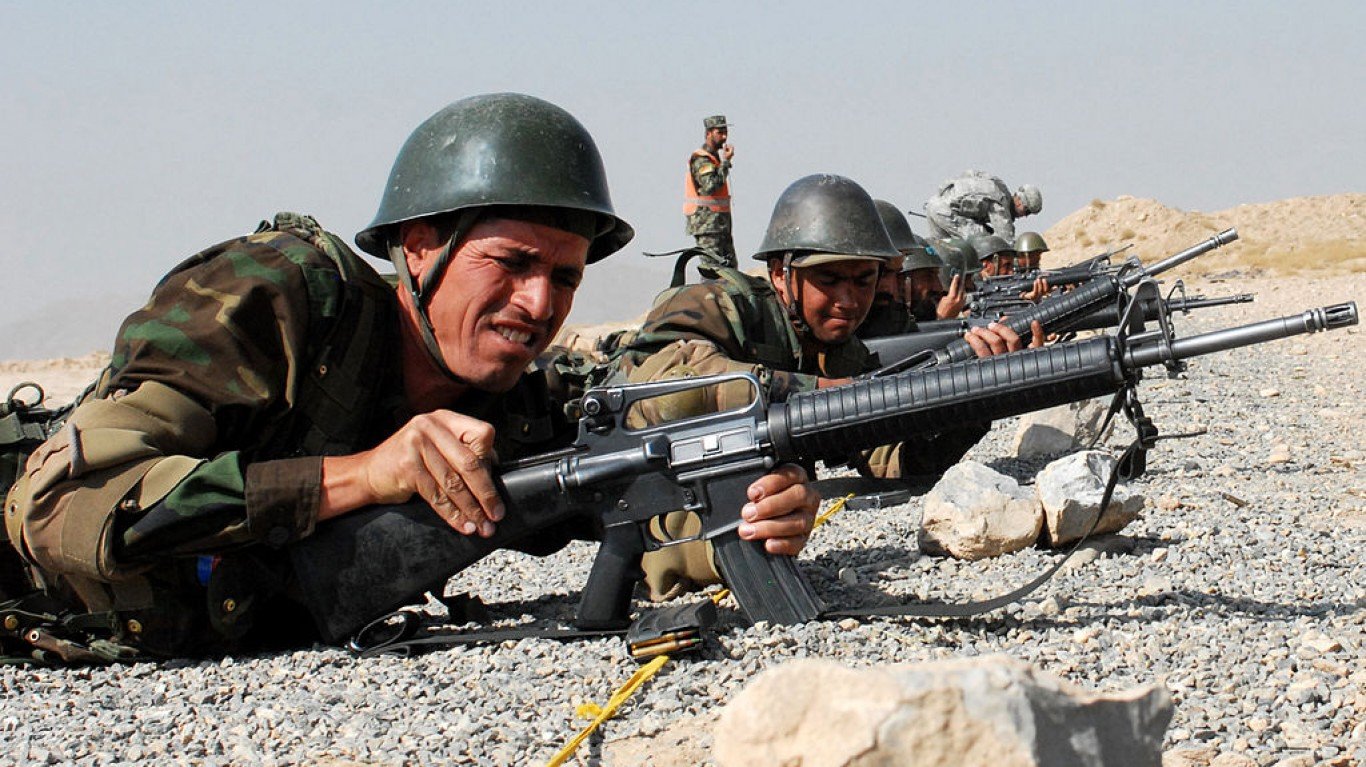
20. Afghanistan
> Armed forces personnel 2017: 323,000
> Armed forces personnel 2007: 51,000
> Armed forces 10-year change: 533.3%
> Military spending 2018: $204.2 million
> Military spending 5-year growth: 1.4%
Nearly two decades into the U.S.-led invasion of this war-torn country to route al-Qaeda and Taliban militants in the wake of the Sept. 11, 2001, terrorist attacks on the U.S., Afghanistan has vastly expanded its own military capabilities. Afghanistan’s military personnel increase from 51,000 to 323,000 is the largest percentage increase of any country in the last decade. After the Islamic State group lost territory in Syria and Iraq, its militants expanded its territory in the rugged terrain of northeastern Afghanistan, while the Taliban has redoubled attacks. Peace talks between the United States and the Taliban are ongoing despite nearly daily assaults against the Afghan army by the militant group.
[in-text-ad]
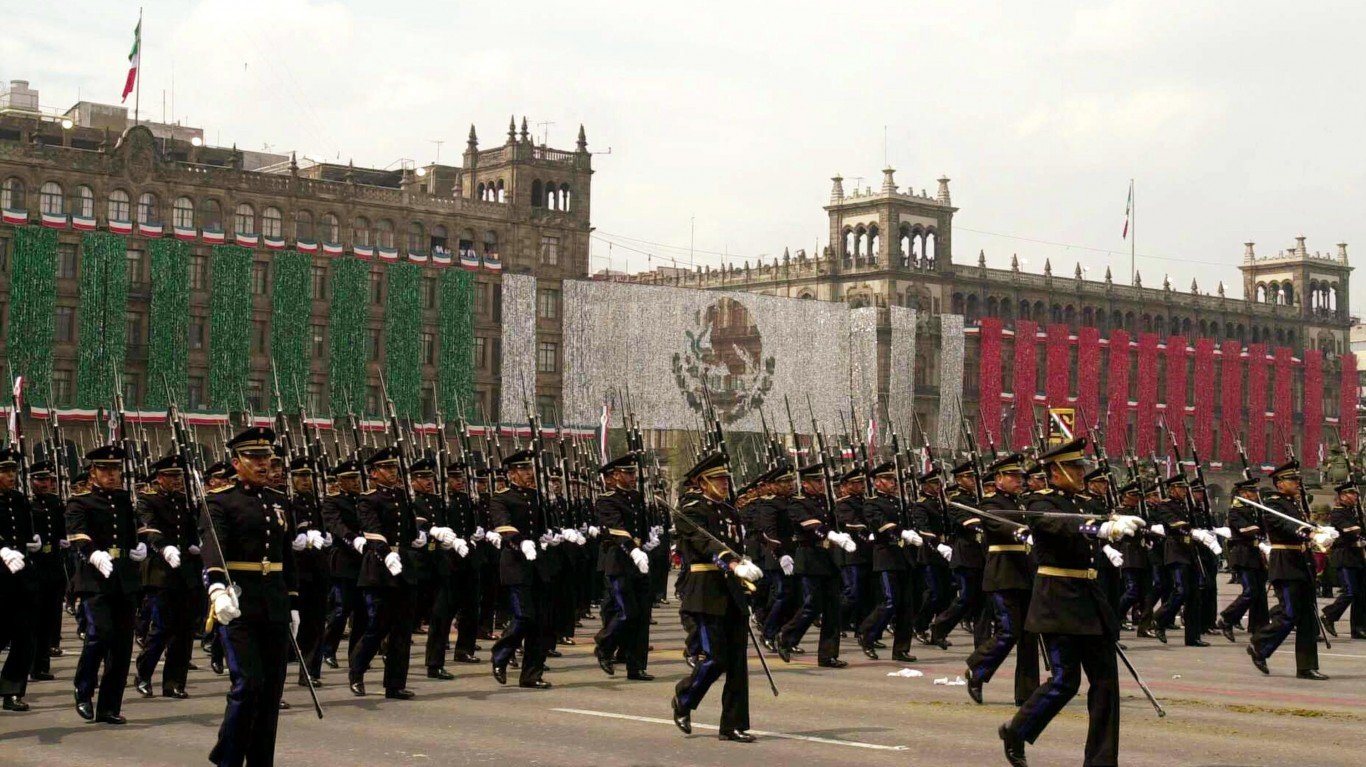
19. Mexico
> Armed forces personnel 2017: 336,000
> Armed forces personnel 2007: 286,000
> Armed forces 10-year change: 17.5%
> Military spending 2018: $6.4 billion
> Military spending 5-year growth: 3.4%
Grappling with powerful drug cartels, Mexico has in recent years been boosting its military strength and modernizing its armed forces. Under former President Enrique Peña Nieto, Mexico has purchased $1 billion worth of U.S. military equipment, including Humvees and Black Hawk helicopters, over the past two years. The number of armed forces personnel in Mexico increased by 50,000 people, or 17.5%, up to 336,000. Recently, the Mexican military has been deployed en force to crack down on U.S.-bound migrant caravans from the violence-ravaged Northern Triangle countries of Guatemala, El Salvador, and Honduras.
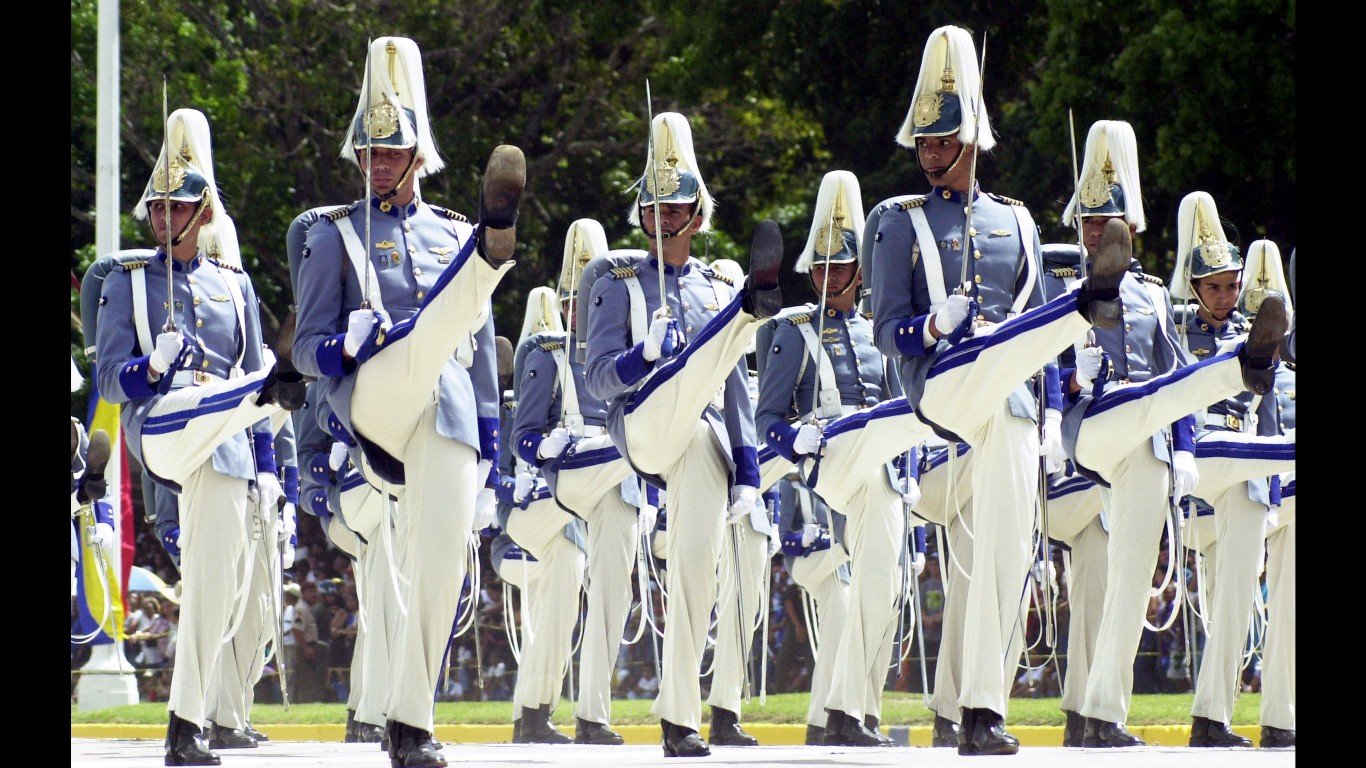
18. Venezuela
> Armed forces personnel 2017: 343,000
> Armed forces personnel 2007: 115,000
> Armed forces 10-year change: 198.3%
> Military spending 2018: N/A
> Military spending 5-year growth: N/A
Until his death in 2013, authoritarian socialist President Hugo Chávez expanded his country’s military by more than 200,000 troops to counter rising discontent among Venezuelans who were not on board with his populist agenda. A 2009 deal with Russia gave Chávez a $2.2 billion line of credit to buy military hardware, including tanks and anti-aircraft systems amid rising tensions with Colombia and the United States. Chávez’s successor Nicolas Maduro has continued the legacy of creating a larger, “coup-proof” military, but as Venezuela crumbles into a failed state, the unwavering loyalty of the military to its president is increasingly in doubt after an alleged coup attempt in April 2019.
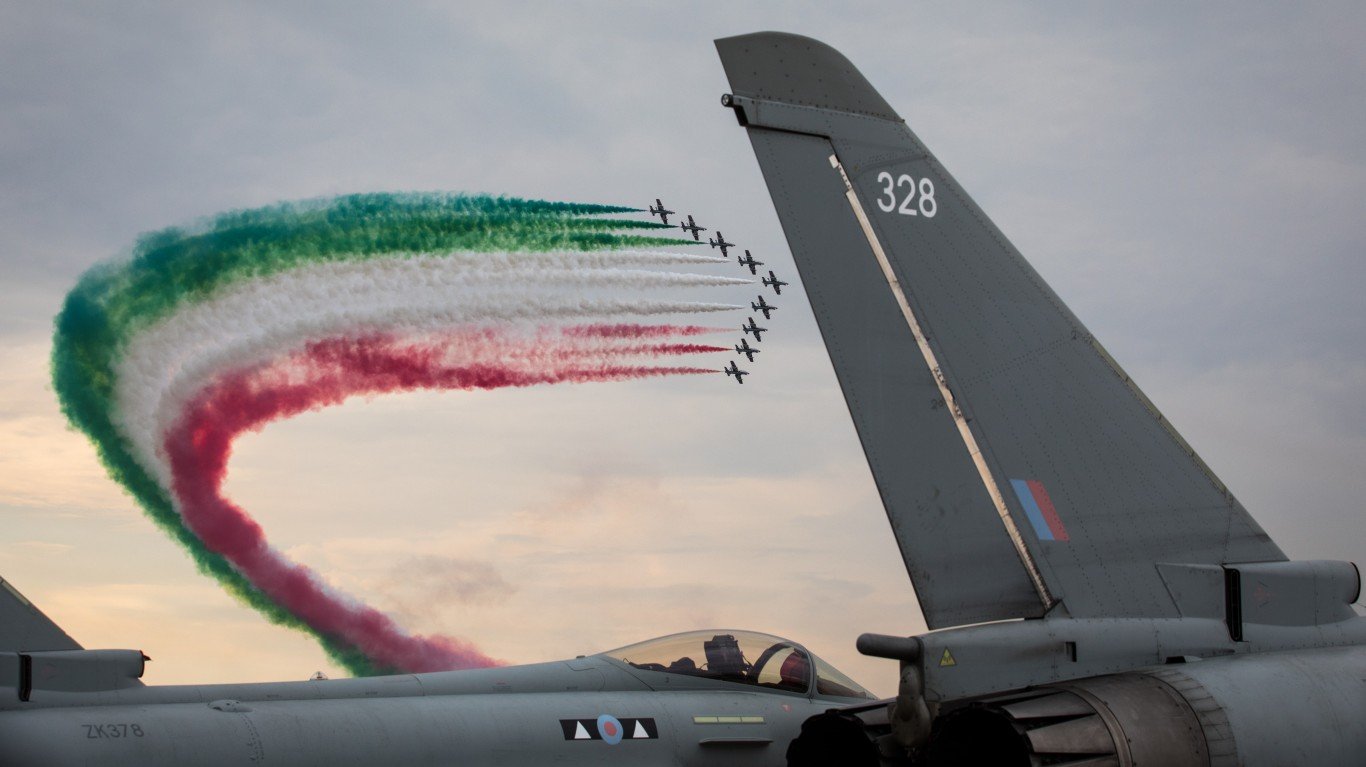
17. Italy
> Armed forces personnel 2017: 347,000
> Armed forces personnel 2007: 436,000
> Armed forces 10-year change: -20.4%
> Military spending 2018: $26.0 billion
> Military spending 5-year growth: 1.6%
As it teeters toward a recession, Italy has been facing in recent years intense pressure from The European Union to cut spending to reduce the country’s deficit. Italy retains a sizeable military, which participated in operations in the Middle East, the Balkans, and Africa and continues to rescue migrants from vessels in the Mediterranean. But the country’s economic troubles have led to a reduction of armed forces personnel. In 2012, for example, Italy said it would cut the number of generals and admirals by a third and would let go of 20% of its colonels as part of its plan to reduce personnel costs.
[in-text-ad-2]
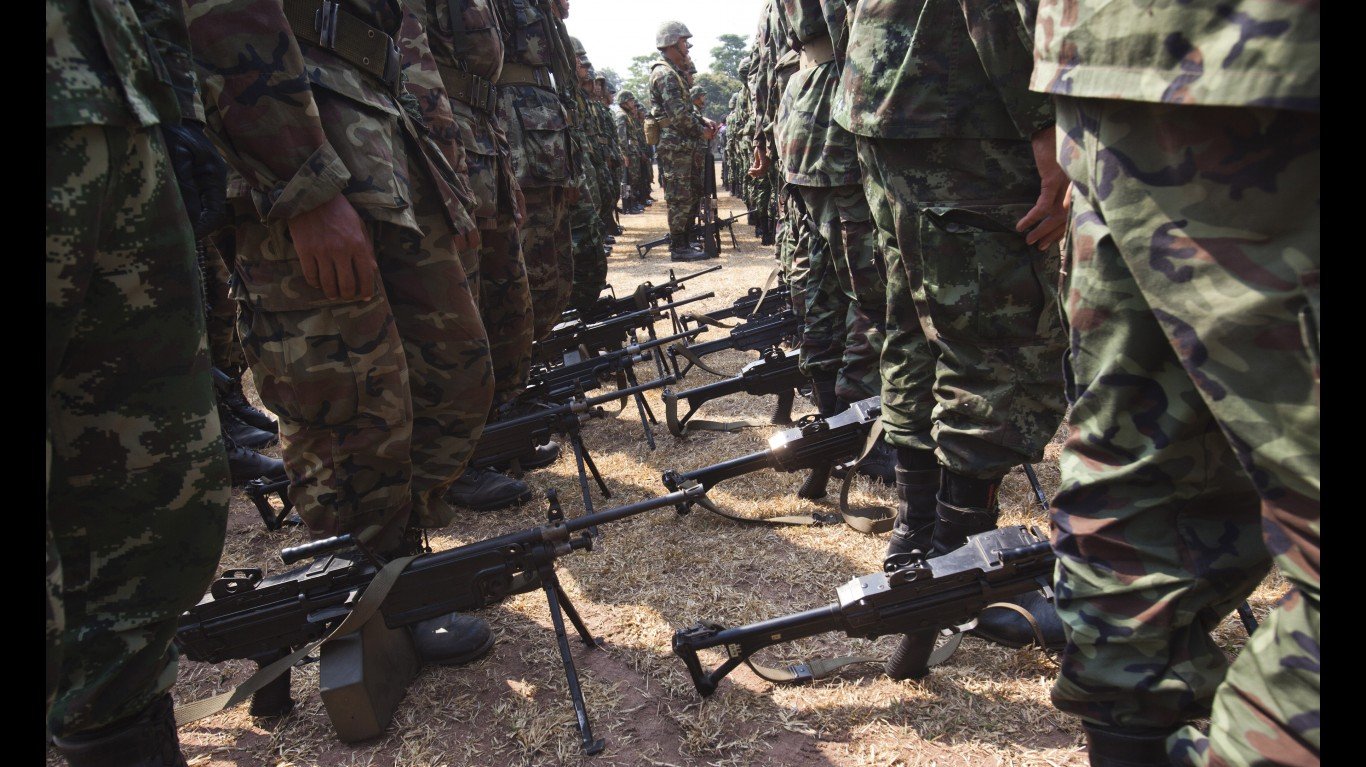
16. Thailand
> Armed forces personnel 2017: 455,000
> Armed forces personnel 2007: 420,000
> Armed forces 10-year change: 8.3%
> Military spending 2018: $6.4 billion
> Military spending 5-year growth: 18.4%
Following a 2014 coup, Thailand held elections in March for the first time since the army took control of the country. In June, the country’s parliament voted to keep junta leader and former general Prayuth Chan-ocha as prime minister, assuring that his party created by the previous ruling military government is still in control, albeit with just a slim majority in the House of Representatives. Thailand’s steep increase in military spending in recent years is reflective of the armed forces’ control of the country.

15. Colombia
> Armed forces personnel 2017: 481,000
> Armed forces personnel 2007: 411,000
> Armed forces 10-year change: 17.0%
> Military spending 2018: $10.3 billion
> Military spending 5-year growth: 7.3%
Colombia has long been ravaged by internal illicit narcotics trade that continues to challenge the government authority in parts of the country. The country’s coca production fell by more than half between 2007 and 2012 due in part to heightened counter-narcotics operations, but production has picked up since. The economic collapse of Venezuela to the East has led Colombia to a build up its border with the country. Colombia now has nearly half a million armed forces personnel.
[in-text-ad]
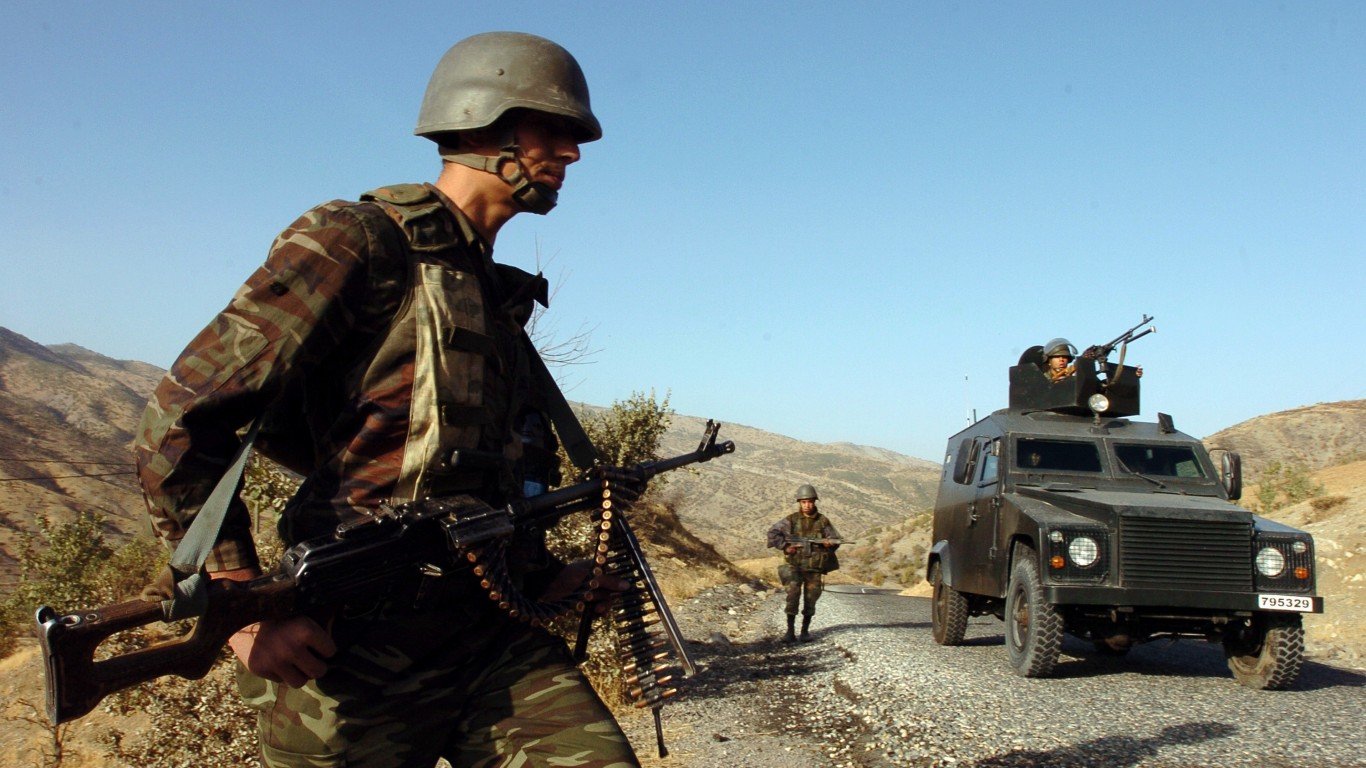
14. Turkey
> Armed forces personnel 2017: 512,000
> Armed forces personnel 2007: 612,000
> Armed forces 10-year change: -16.3%
> Military spending 2018: $22.0 billion
> Military spending 5-year growth: 59.6%
Turkey borders Syria to the North and operates against U.S.-backed Kurdish forces there, Turkey has significantly boosted both its military spending and armed forces personnel. Last year alone, Turkey boosted defense spending by 24%, though the amount of armed forces personnel dropped by 100,000. The country straddling East and West is also planning to purchase $2.5 billion worth of Russian air defense missiles, further souring relations between Turkey and the U.S. Under President Tayyip ErdoÄan, Turkey has forged closer ties to Russia after imposing restrictions on U.S. and German air force operations in its territory.
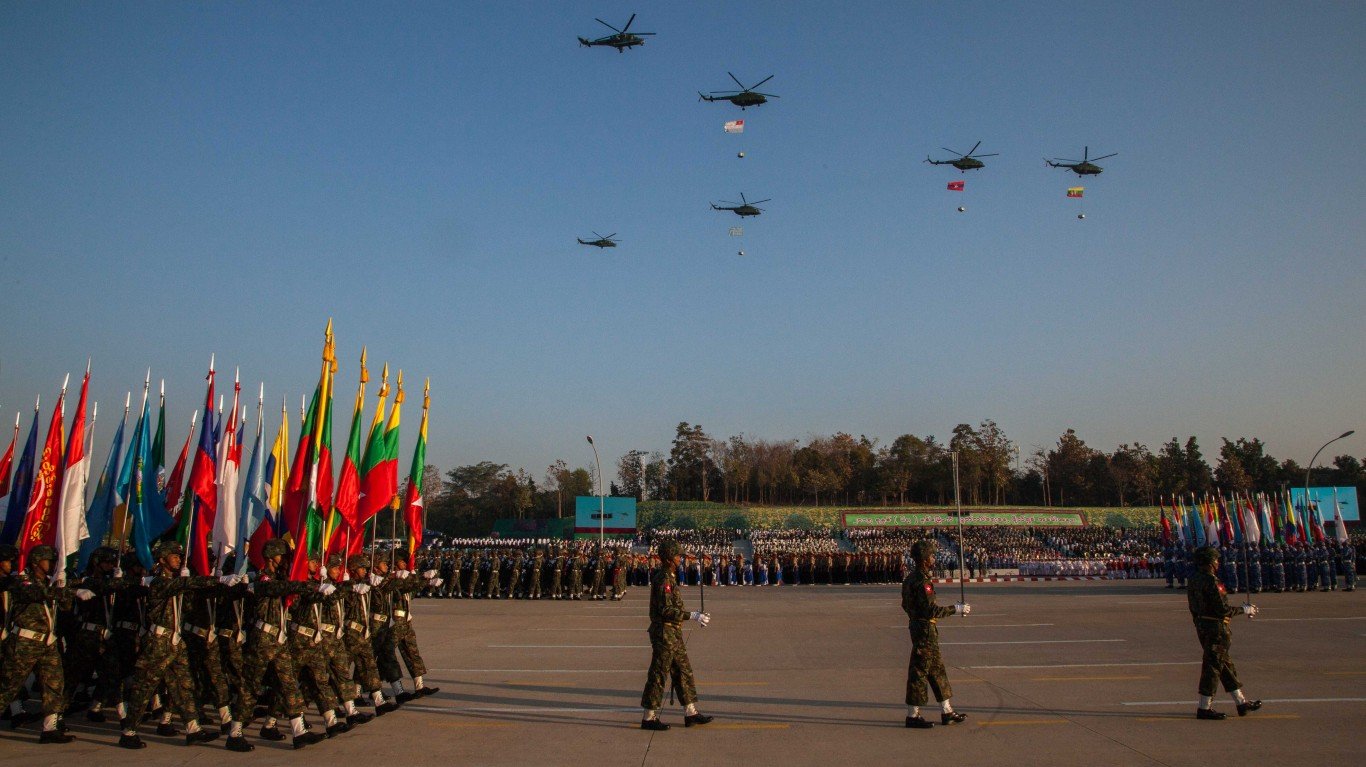
13. Myanmar
> Armed forces personnel 2017: 513,000
> Armed forces personnel 2007: 513,000
> Armed forces 10-year change: 0.0%
> Military spending 2018: $3.2 billion
> Military spending 5-year growth: -3.5%
Myanmar’s total armed forces personnel count has remained steady for the last decade, but if the appearance of several high-ranking military officials at an Israeli arms expo in June is any indication, the contraction in Myanmar’s military spending over the past five years may be coming to an end. Indeed, despite U.S. and E.U. arms embargos against country for its scorched-earth campaign against its Muslim minority, Myanmar has found China and Russia to be willing sellers of armored vehicles, air defense missiles, fighter jets, and other military hardware. Recently, Amnesty International raised alarm over “indiscriminate” attacks by the Myanmar military against ethnic minorities in western Rakhine state.
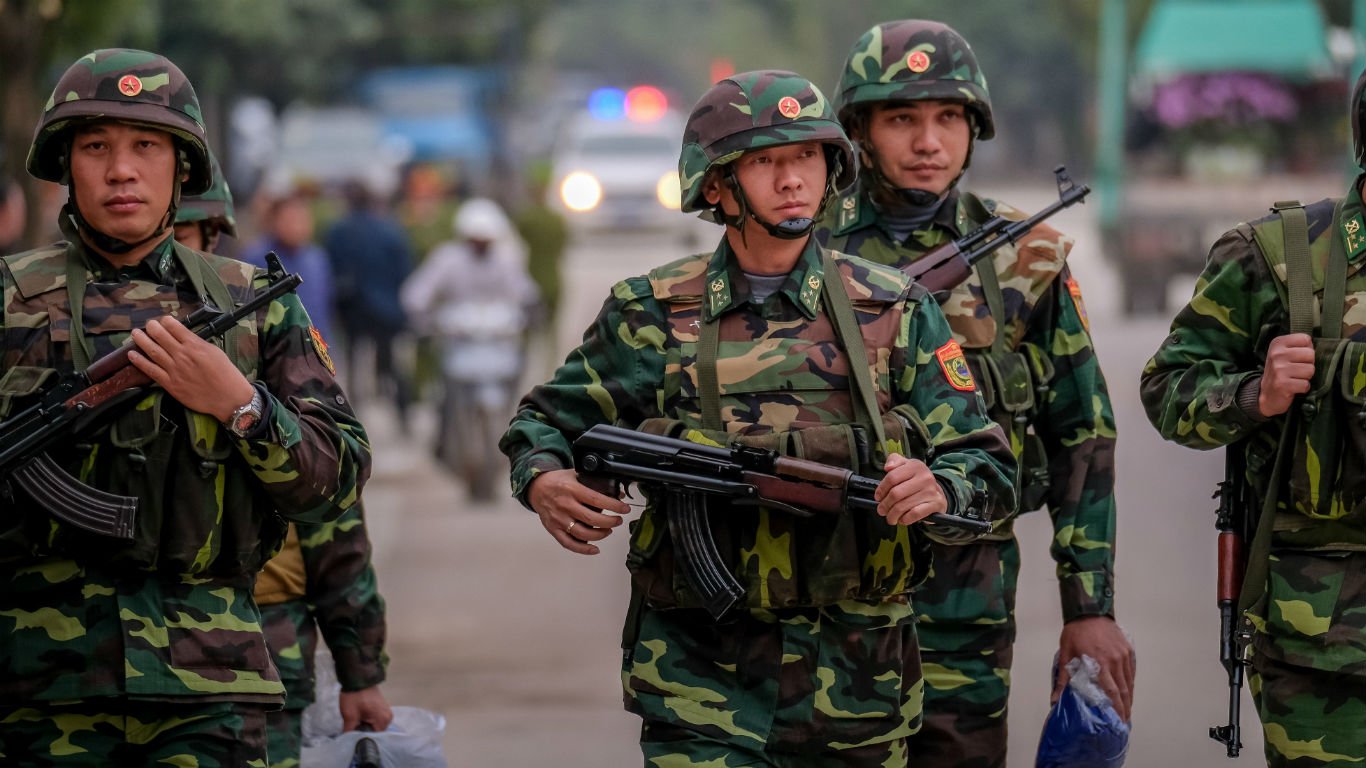
12. Vietnam
> Armed forces personnel 2017: 522,000
> Armed forces personnel 2007: 495,000
> Armed forces 10-year change: 5.5%
> Military spending 2018: $5.5 billion
> Military spending 5-year growth: 38.5%
Vietnam has emerged as an important country in the ongoing efforts by China to expand its sphere of influence in the Asia-Pacific region. Meanwhile, the United States has been trying to woo the Southeast Asian country away from buying weapons from Russia as the country has been greatly increasing defense spending. Vietnam boosted defense spending by nearly 400% from 2005 to 2014, according to the U.S. Department of Commerce, but little of that is going to purchase U.S.-made weapons. The country’s military now has more than half a million military personnel.
[in-text-ad-2]
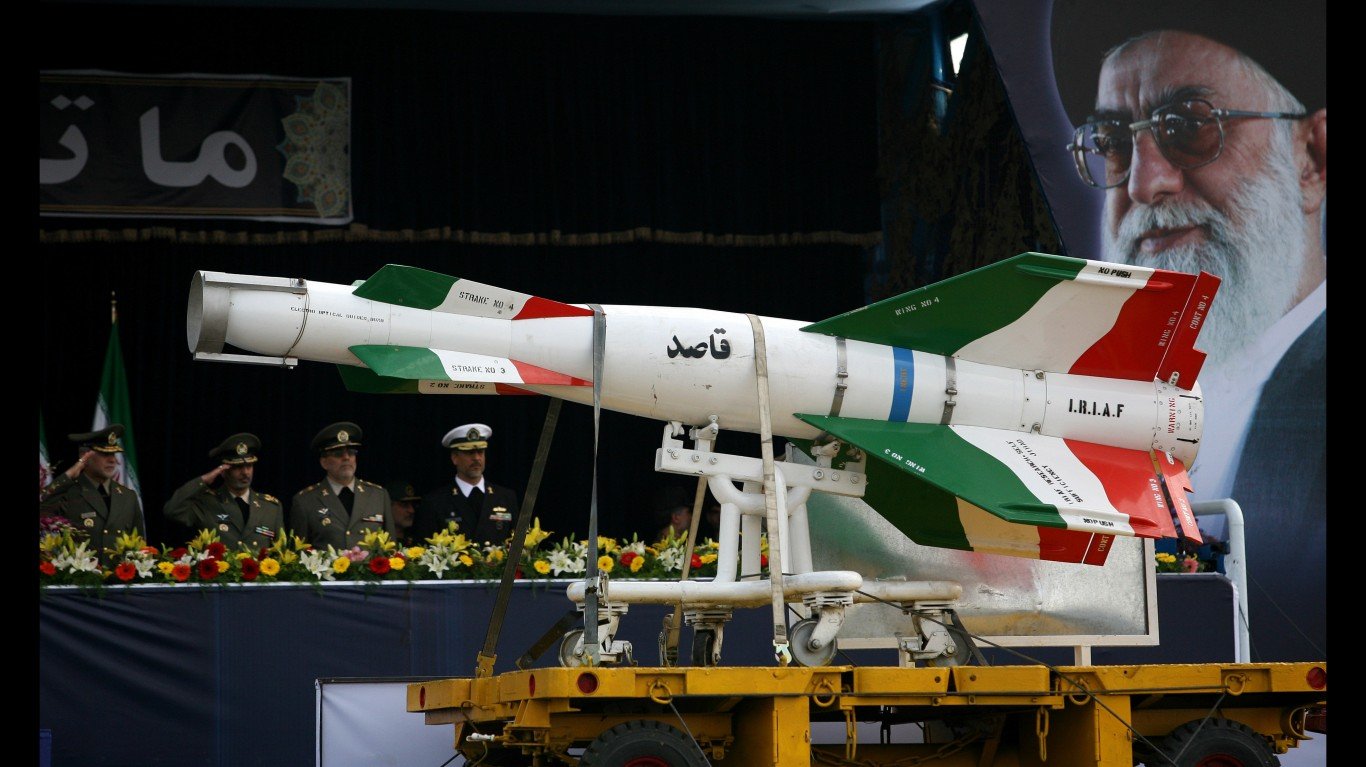
11. Iran
> Armed forces personnel 2017: 563,000
> Armed forces personnel 2007: 563,000
> Armed forces 10-year change: 0.0%
> Military spending 2018: $12.6 billion
> Military spending 5-year growth: 18.3%
The flow of advanced Russian military weapons to Iran, including surface-to-air missiles, markedly increased after 2006 and complicated efforts by the United States and its allies to influence Iran’s nuclear ambitions. While personnel numbers were the same as they were in 2007, Iran’s annual defense expenditure declined slightly from 2012 to 2017, with only a modest decline last year. Tehran claims the United States and its European allies are waging an economic war against Iran, and its leaders believe Western countries are doing the bidding of its regional foes Israel and Saudi Arabia.
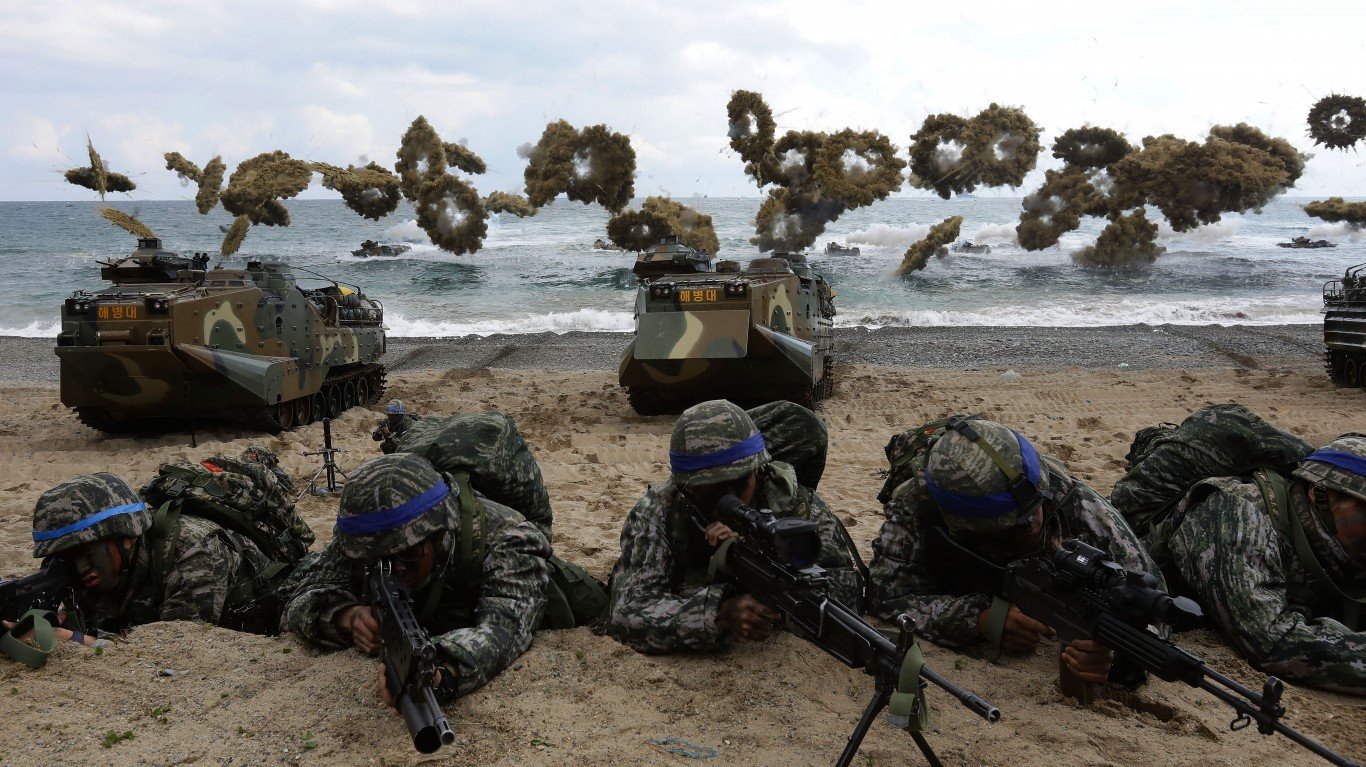
10. South Korea
> Armed forces personnel 2017: 634,000
> Armed forces personnel 2007: 692,000
> Armed forces 10-year change: -8.4%
> Military spending 2018: $41.2 billion
> Military spending 5-year growth: 18.4%
South Korea has been at war with its northern neighbor since the 1950s, so it is no surprise that both Koreas rank high in the countries with the biggest military and the largest defense expenditure. One of the reasons South Korea’s army is so large is that males age 18 and over are required to serve in the military for at least 21 months. President Moon Jae-in plans to roll the requirement back to 18 months, as well as cut the total number of active duty troops to 500,000, as compared to the current levels of 634,000. South Korea shares some of its defense costs with the United States, which considers the country strategically vital to its interests in the Asia-Pacific region.
[in-text-ad]
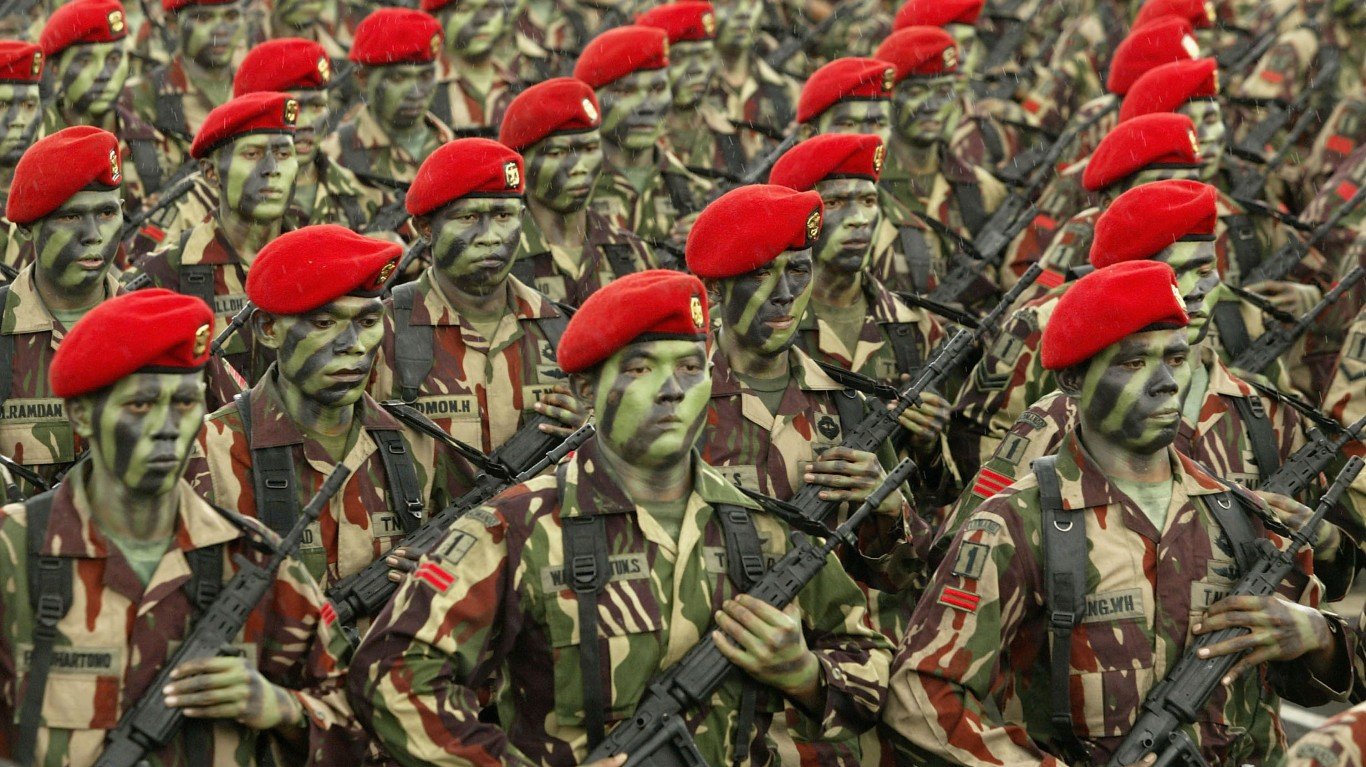
9. Indonesia
> Armed forces personnel 2017: 676,000
> Armed forces personnel 2007: 582,000
> Armed forces 10-year change: 16.2%
> Military spending 2018: $7.7 billion
> Military spending 5-year growth: -4.0%
Like other countries on the list whose military spending declined over the past five years, Indonesia’s 4% decline is simply scaling back from previous large increases in spending. The country’s military spending increased from less than $1 billion in 2001 to nearly $8.4 billion in 2013, when its military spending peaked. Despite this, the country added nearly 100,000 troops in the past 10 years. Indonesia recently committed to spending more of that money on U.S.-made military hardware in a bid to stave off any trade-related issues. Indonesia, like other Asia-Pacific countries, is in a regional arms race, having recently purchased 11 Russian Su-35 fighter jets.
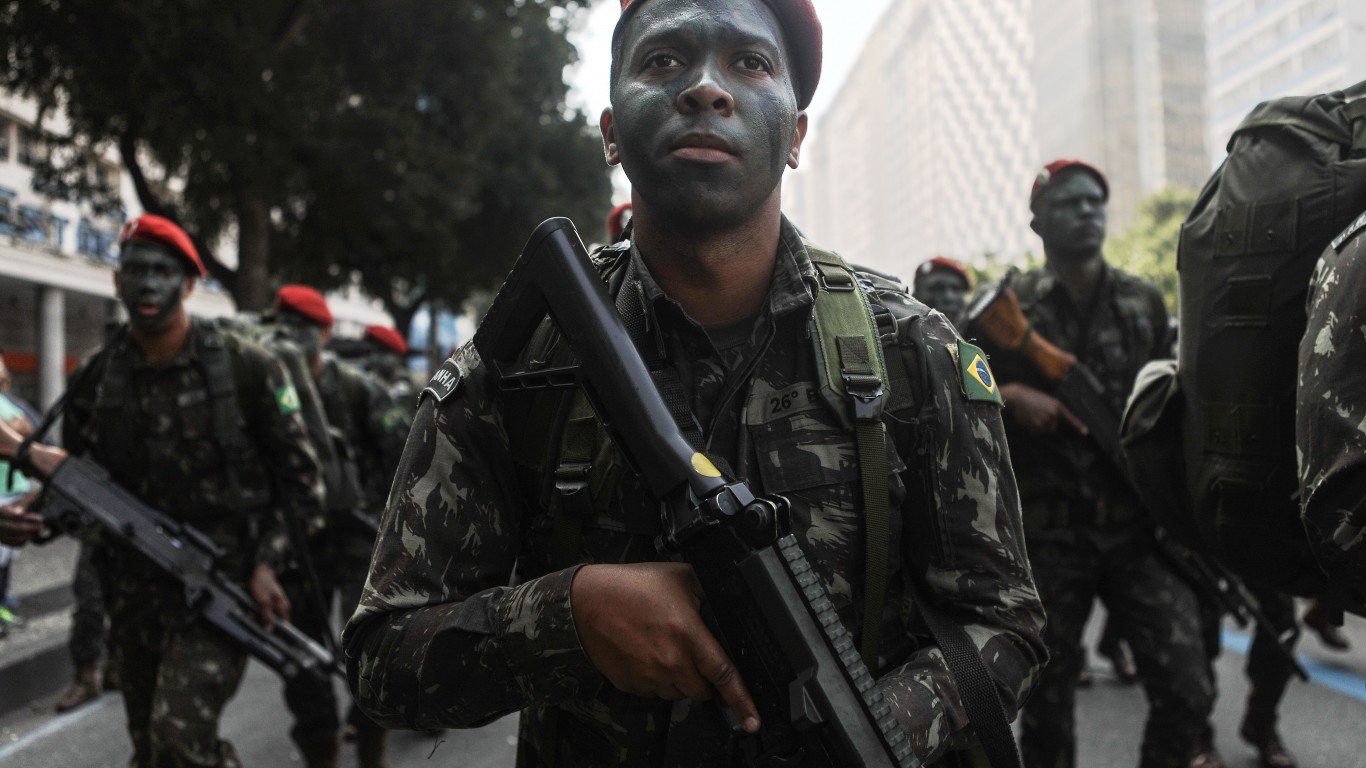
8. Brazil
> Armed forces personnel 2017: 730,000
> Armed forces personnel 2007: 721,000
> Armed forces 10-year change: 1.2%
> Military spending 2018: $30.8 billion
> Military spending 5-year growth: 5.9%
Brazil’s defense budget declined in the midst of the country’s 2014 economic crisis and rebounded in 2017. The figure still remains below the peak of nearly $37 billion in spending in 2011. The size of the military has remained relatively stagnant, growing just 1.2% since 2007. The worst of Brazil’s most recent economic contraction may be over, but fiscal forecasts indicate an ongoing weak recovery, which will impact the country’s military spending for years to come. A proposed military spending austerity program is being adversely impacted by higher pay that would consume most of the sanctions on military pensions.

7. Egypt
> Armed forces personnel 2017: 836,000
> Armed forces personnel 2007: 866,000
> Armed forces 10-year change: -3.5%
> Military spending 2018: $2.6 billion
> Military spending 5-year growth: -14.7%
Egypt’s military spending began to plummet from its peak in 2015, when it spent $5.5 billion. By 2017, the country’s annual defense expenditure fell to nearly $2.8 billion, its lowest level since 2007. The North African nation also has 30,000 fewer military personnel than it did at that time. Last year’s military spending budget declined further, but Egypt has been drastically increasing arms imports, military pensions, and initiating other military spending projects even as social spending has been more tightly controlled as part of a national fiscal austerity.
[in-text-ad-2]
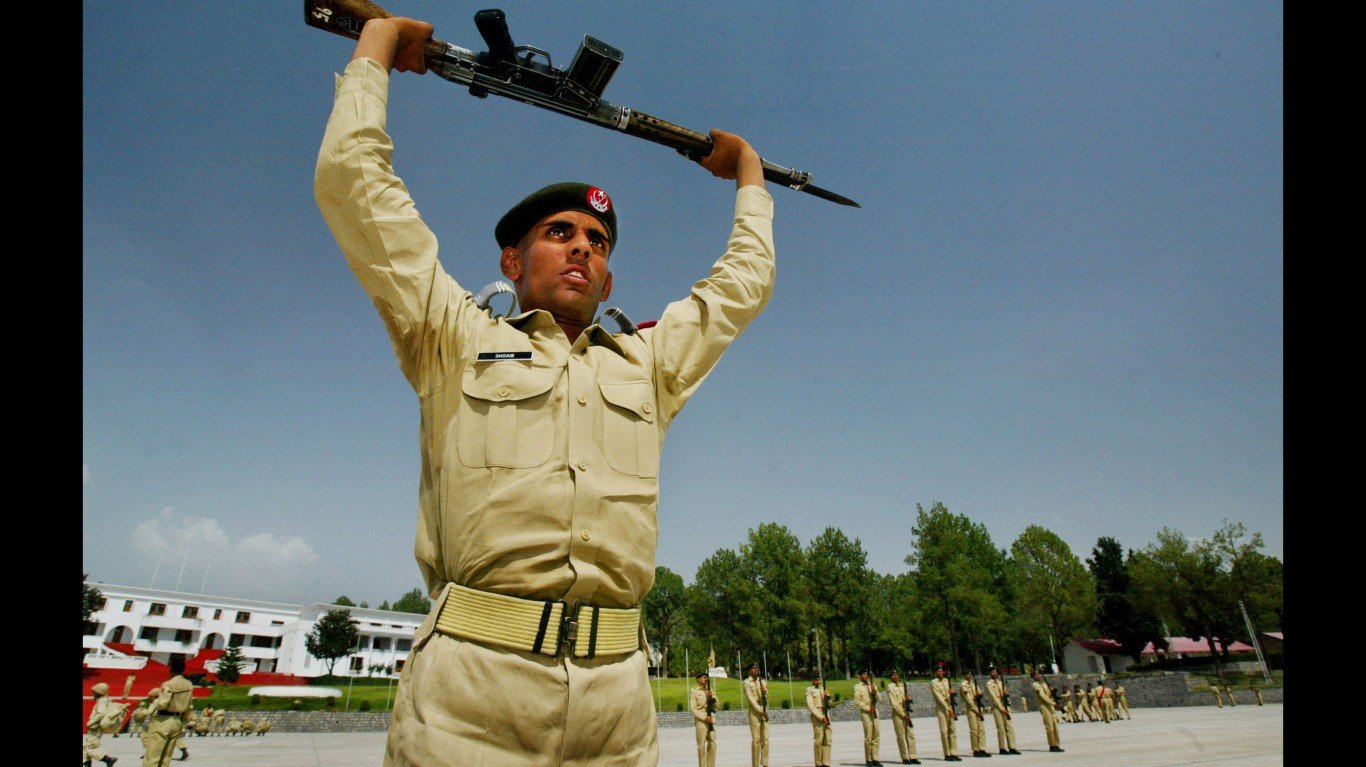
6. Pakistan
> Armed forces personnel 2017: 936,000
> Armed forces personnel 2007: 921,000
> Armed forces 10-year change: 1.6%
> Military spending 2018: $12.7 billion
> Military spending 5-year growth: 44.6%
Amid ongoing tensions with India, Pakistan has been steadily increasing its annual military spending since 2001 to try to keep up with its much larger southern adversary. It has also increased the number of military personnel to 936,000. Pakistan now spends more than three times what it did two decades ago on its military. But annual military spending could decline this year for the first time since 2008 amid what Prime Minister Imran Khan calls a “critical financial situation” the country. The country has pledged to freeze military spending as part of a loan agreement with the International Monetary Fund.
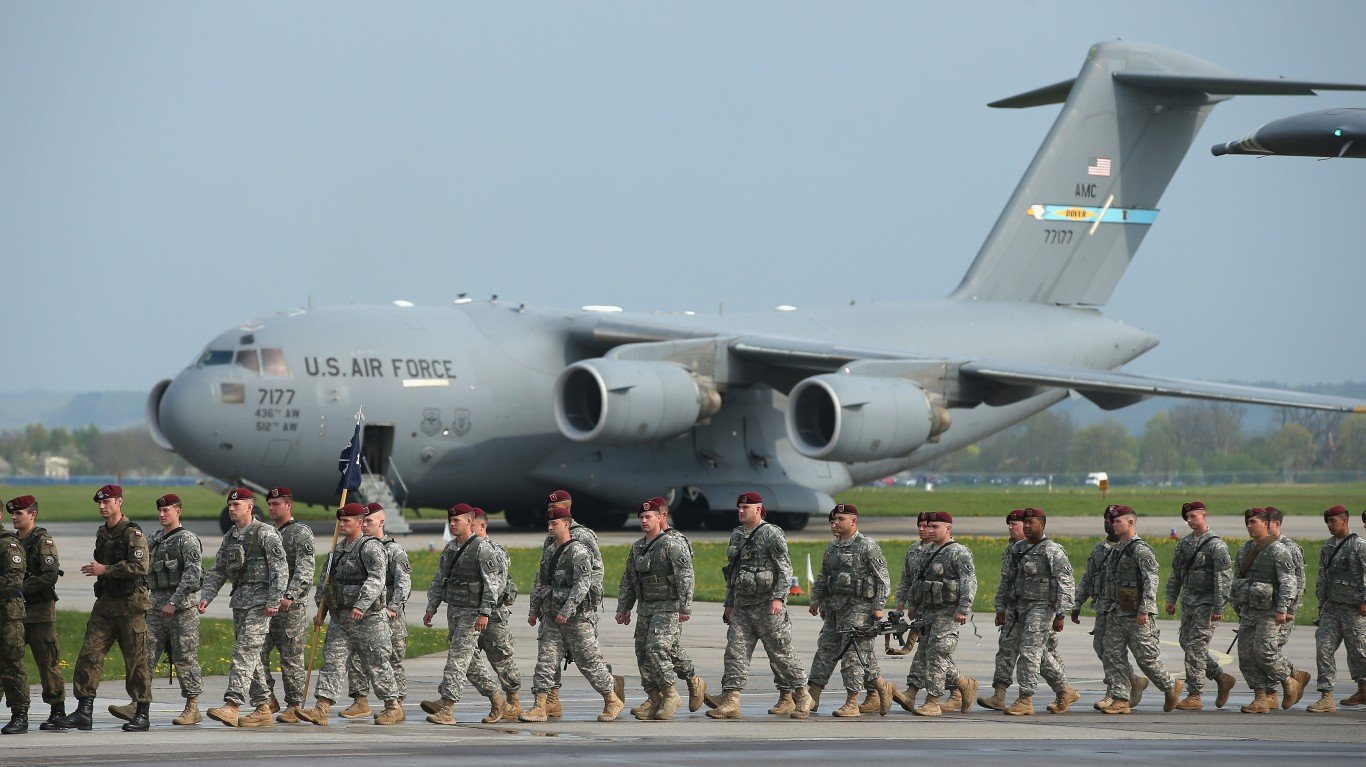
5. United States
> Armed forces personnel 2017: 1,359,000
> Armed forces personnel 2007: 1,555,000
> Armed forces 10-year change: -12.6%
> Military spending 2018: $633.6 billion
> Military spending 5-year growth: -5.9%
One of just five nations with over 1 million members of the armed forces, the United States shed nearly 200,000 troops in the past decade as the War in Iraq wound down to a close. Though the U.S. ranks just fifth in the world in overall armed forces personnel, it has by far the largest military budget of any country. The nation spent over $633 billion on its military in 2017, down from its peak of $711 billion in 2011. For context, the next biggest spender, China, had a military budget of less than $240 billion for that same year.
[in-text-ad]
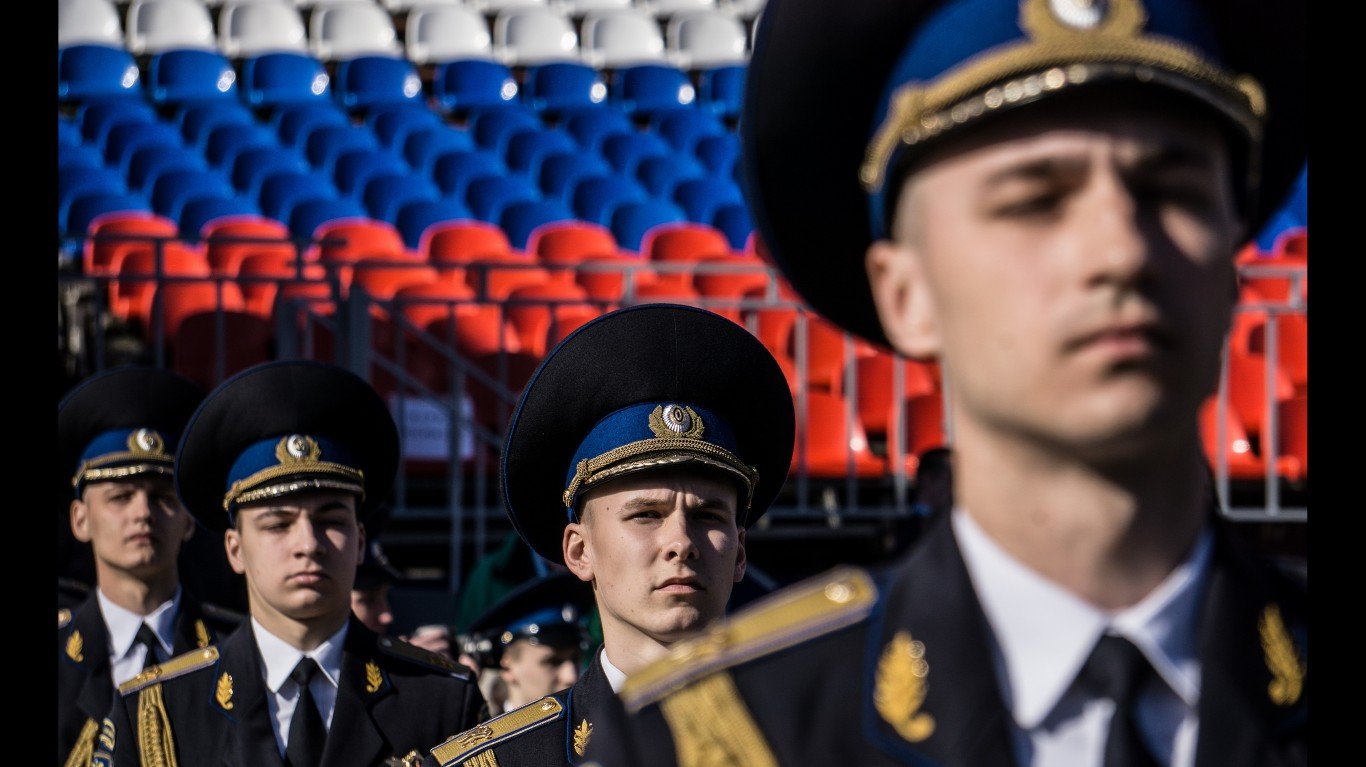
4. Russian Federation
> Armed forces personnel 2017: 1,454,000
> Armed forces personnel 2007: 1,476,000
> Armed forces 10-year change: -1.5%
> Military spending 2018: $64.2 billion
> Military spending 5-year growth: -3.7%
As with Egypt and Pakistan, Russia’s defense spending has declined due to recent national economic hardship. The annual expenditure has contracted from a peak of $88.4 billion in 2013 to a seven-year low of $66.3 billion in 2018. Likewise, the number of military personnel has shrunk. In 2017, Russia had a military population that was slightly smaller than North Korea’s in the same year. As with the United States and China, Russia is a leader in the global trade of military equipment and leverages its arms trade for profit and to influence policies in other countries.
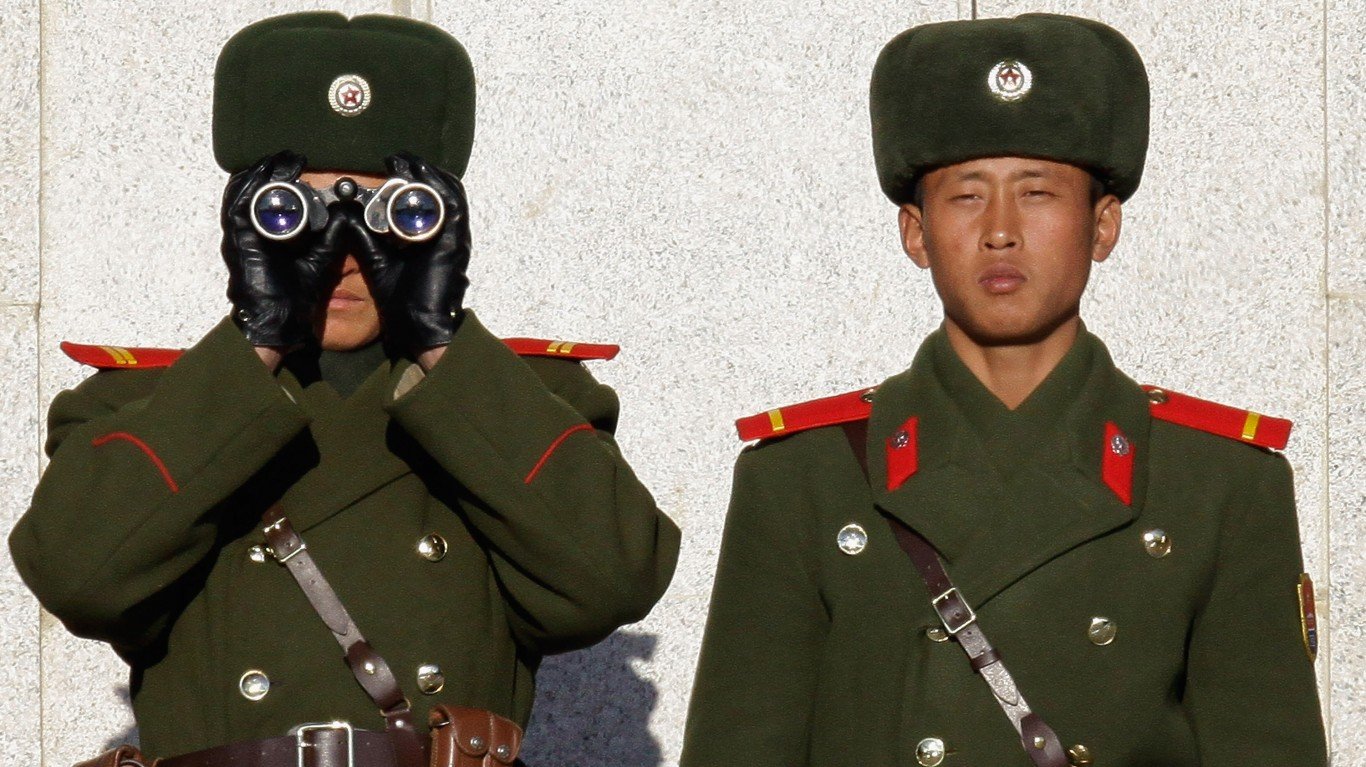
3. North Korea
> Armed forces personnel 2017: 1,469,000
> Armed forces personnel 2007: 1,295,000
> Armed forces 10-year change: 13.4%
> Military spending 2018: N/A
> Military spending 5-year growth: N/A
One thing we know about North Korea, one of the most secretive countries on the planet, is that it has one of the largest militaries, behind only India and China in numbers based on 2017 estimates. The size of North Korea’s military is an estimated 1,469,000 — more than double the size of its adversary, South Korea. But what South Korea lacks in military personnel it has in technological superiority and the backing of the U.S. armed forces. North Korea uses missile tests and nuclear weapons development to remind the world of its military strength.
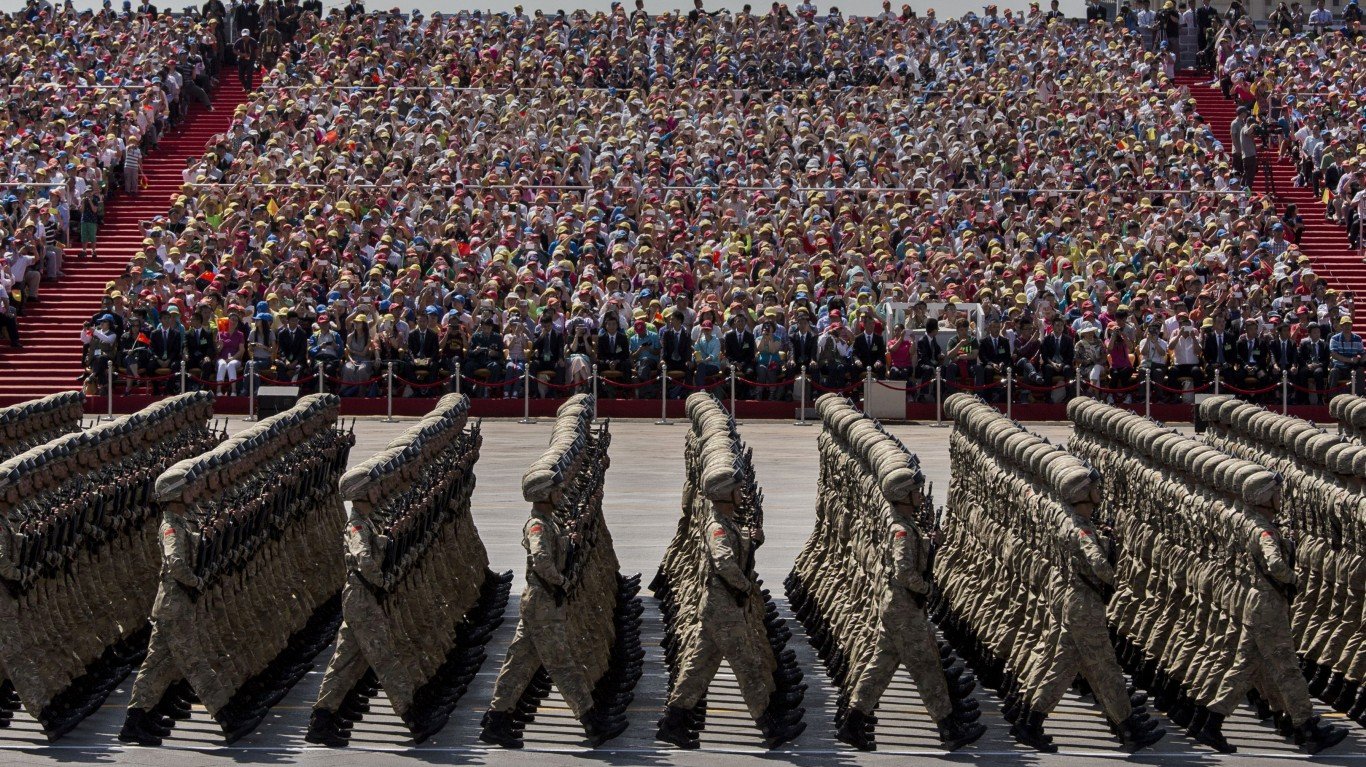
2. China
> Armed forces personnel 2017: 2,695,000
> Armed forces personnel 2007: 2,885,000
> Armed forces 10-year change: -6.6%
> Military spending 2018: $239.2 billion
> Military spending 5-year growth: 35.6%
China is eager to catch up to the United States in terms of military strength and influence, especially in the Asia-Pacific region. Despite the country’s recent slowing economic growth, it still maintains the world’s second largest army with nearly 2.7 million troops and is by some accounts quickly approaching technological parity with the United States. China’s efforts to expand its military sphere of influence in the Asia-Pacific region are also causing geopolitical tensions, contributing to an Asian arms race.
[in-text-ad-2]

1. India
> Armed forces personnel 2017: 3,031,000
> Armed forces personnel 2007: 2,576,000
> Armed forces 10-year change: 17.7%
> Military spending 2018: $66.6 billion
> Military spending 5-year growth: 28.8%
The world’s fifth largest economy is home to the largest military of more than 3 million people, and India hopes to maintain this position in order to counteract any threats from its nuclear-armed adversary to the north, Pakistan. India has recently expressed interest in upgrading its military and pivoting away from Russia and toward the United States in military procurement. Since 1992, India has only reduced its annual military spending once, in 2012, based on estimates used by SIPRI.
Sponsored: Find a Qualified Financial Advisor
Finding a qualified financial advisor doesn’t have to be hard. SmartAsset’s free tool matches you with up to 3 fiduciary financial advisors in your area in 5 minutes. Each advisor has been vetted by SmartAsset and is held to a fiduciary standard to act in your best interests. If you’re ready to be matched with local advisors that can help you achieve your financial goals, get started now.
 24/7 Wall St.
24/7 Wall St.